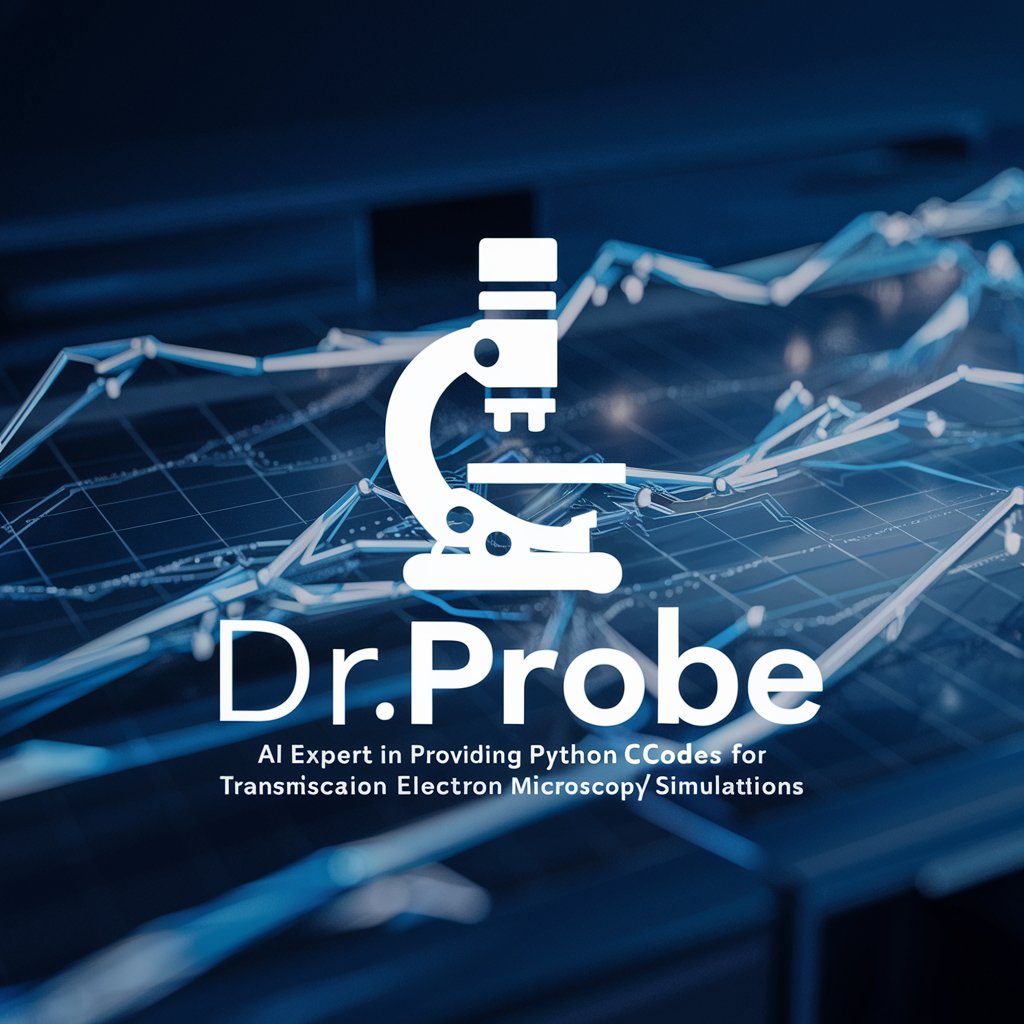4 GPTs for 3D Reconstruction Powered by AI for Free of 2025
AI GPTs for 3D Reconstruction refer to advanced artificial intelligence models, specifically Generative Pre-trained Transformers, tailored for creating, analyzing, and enhancing 3D models from various data inputs. These tools leverage the power of GPTs to interpret complex data sets, including images, videos, and sensor data, to generate detailed 3D representations. This technology is pivotal for applications requiring precise and detailed 3D models, such as virtual reality, gaming, architecture, and medical imaging, offering innovative solutions that streamline and enhance the 3D reconstruction process.
Top 4 GPTs for 3D Reconstruction are: Bio Image Buddy,VTK DICOM Imaging Expert,Visionary Guide中文支持,DrProbe
Bio Image Buddy
Empowering your research with AI-driven image insights

VTK DICOM Imaging Expert
AI-powered DICOM Imaging Insights

Visionary Guide中文支持
Empowering vision with AI guidance.

DrProbe
AI-powered TEM Simulation and Analysis

Key Attributes and Functions
AI GPTs for 3D Reconstruction boast a range of unique characteristics and capabilities, including high adaptability for tasks ranging from generating simple models to complex, detailed reconstructions. These tools can understand and process various types of input data, including textual descriptions, images, and direct sensor feeds, to produce accurate 3D models. Special features may include advanced language understanding for interpreting project specifications, technical support for troubleshooting, web searching for gathering additional data, image creation for visualization, and data analysis for optimizing the reconstruction process.
Intended Users
These AI GPTs tools are designed for a wide range of users, from novices interested in 3D modeling to developers and professionals working in fields like gaming, film production, architecture, and healthcare. They offer easy-to-use interfaces for those without coding expertise, alongside customizable options for users with technical backgrounds, providing a flexible toolset for anyone looking to engage with 3D reconstruction.
Try Our other AI GPTs tools for Free
Sports Therapy
Discover how AI GPTs revolutionize sports therapy with tailored diagnostics, personalized treatment plans, and innovative rehabilitation techniques.
Rehabilitation Science
Explore how AI GPTs revolutionize Rehabilitation Science, offering personalized, adaptable tools for enhanced patient care and professional support.
Commuting Solution
Discover how AI GPTs for Commuting Solution optimize your travel with real-time updates, route optimization, and seamless public transit integration, all through intuitive AI-powered tools.
Airport Transfers
Discover how AI GPTs revolutionize airport transfers, offering personalized, efficient, and integrated travel solutions. Perfect for travelers, agents, and developers alike.
Night Out
Discover how AI GPTs for Night Out can transform your nightlife experiences with personalized recommendations, event planning support, and real-time assistance.
Homemade Diets
Explore AI-powered tools for personalized homemade diet planning, recipe generation, and nutritional advice tailored to your health goals.
Further Perspectives
AI GPTs for 3D Reconstruction represent a significant advancement in the field, offering solutions that are not only more efficient but also capable of handling a broader range of applications. Their user-friendly interfaces and integration capabilities make them accessible to a wide audience, while their adaptability and customization options ensure they meet the needs of specialized sectors.
Frequently Asked Questions
What exactly are AI GPTs for 3D Reconstruction?
AI GPTs for 3D Reconstruction are specialized artificial intelligence models that generate, analyze, and improve 3D models from diverse data inputs, using the capabilities of Generative Pre-trained Transformers.
Who can benefit from using these tools?
Novices, developers, and professionals in industries like gaming, film, architecture, and healthcare can benefit from these tools, thanks to their adaptability and ease of use.
Do I need programming skills to use these tools?
No, these tools are designed to be user-friendly for individuals without programming skills, while also offering advanced features for those with technical expertise.
Can these tools process images or videos for 3D Reconstruction?
Yes, these tools can process various types of input data, including images and videos, to produce accurate and detailed 3D models.
How do these tools handle complex reconstruction tasks?
They leverage advanced AI algorithms and deep learning techniques to interpret and analyze complex data sets, enabling the creation of highly detailed and precise 3D models.
Are there customization options available for professional users?
Yes, professional users can access a range of customization options to tailor the tools to specific project requirements, enhancing functionality and flexibility.
Can these tools integrate with existing software or workflows?
Many of these tools are designed to be compatible with existing systems and workflows, offering APIs and plug-ins for seamless integration.
What makes these tools different from traditional 3D modeling software?
Unlike traditional software that relies heavily on manual input, these AI-powered tools automate many aspects of the 3D reconstruction process, using AI to interpret data and generate models, thereby saving time and improving accuracy.